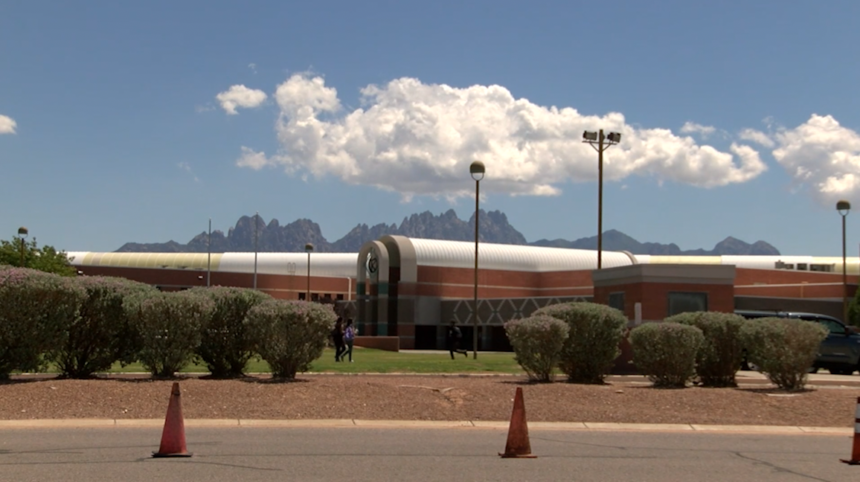Emotions run high in decision to rename Oñate High in Las Cruces

LAS CRUCES, New Mexico — Emotions were still running high Wednesday, the day after the decision was made that a Las Cruces high school named after a controversial Spanish conquistador will be renamed following nationwide protests against racial injustice.
The Las Cruces Public Schools Board of Education voted Tuesday evening to drop the name of Don Juan de Oñate y Salazar from Oñate High School after years of pressure and amid a movement to reexamine the Spanish colonial past in the American Southwest.
“History is not changing, but the way we perceive history is changing,” said board member Ray Jaramillo, the only board member to vote no on the name change.
Numerous Confederate statues and monuments to American slave owners in the South, as well as statues honoring Christopher Columbus, have been taken down by officials or torn down by protester in the weeks following the death of George Floyd at the hands of police in Minneapolis in May.
The Las Cruces school board's 3-1 vote followed a violent confrontation in Albuquerque last month after a man shot an activist who sought to take down a Spanish conquistador statue. The city removed the statue the next day.
Indigenous leaders convinced another New Mexico county to remove its statue of Oñate.
Protesters say figures such as Oñate, who led early Spanish expeditions into present-day New Mexico, shouldn’t be celebrated. They point to Oñate’s order to have the right feet cut off of 24 captive tribal warriors after his soldiers stormed Acoma Pueblo. That attack was precipitated by the killing of Onate’s nephew.
They say other Spanish figures like Oñate oversaw the enslavement of Indigenous populations and tried to outlaw their cultural practices. Oñate was eventually expelled from present-day New Mexico for “excessive force” against members of Acoma Pueblo.
Some Hispanics who trace their lineage to the early Spanish settlers say removing the likenesses of Oñate and others amounts to erasing history — a complicated history both marred by atrocities against Indigenous people and marked by the arduous journeys that many families made for the promise of a new life or to escape persecution in Spain.
The name change followed school district surveys that showed strong opposition from the area’s majority Mexican American community for remaining the school.
Spanish explorers were the first Europeans to set foot in the present-day American Southwest. It started with expeditions in the 1540s as the Spanish searched for the fabled Seven Cities of Gold. Decades later, colonization ramped up and Santa Fe was established as a permanent capital in 1610.
Spanish rule over the New Mexico territory lasted for about two centuries until the area briefly became part of the Republic of Mexico before it was taken over by the U.S.
Some scholars say the phenomenon of conquistador commemoration is linked to efforts that originated more than a century ago as Hispanics tried to convince white members of Congress that New Mexico should become a state.
During the 19th Century, white people moved into the territory and held racist views toward the region’s Native American and Mexican American population, according to John Nieto-Phillips, author of “The Language of Blood: The Making of Spanish-American Identity in New Mexico, 1880s-1930s.”
As a result, Nieto-Phillips said some Hispanics in the region took on a solely Spanish American identity over their mixed heritage to embrace whiteness amid the racist eugenics movement.
